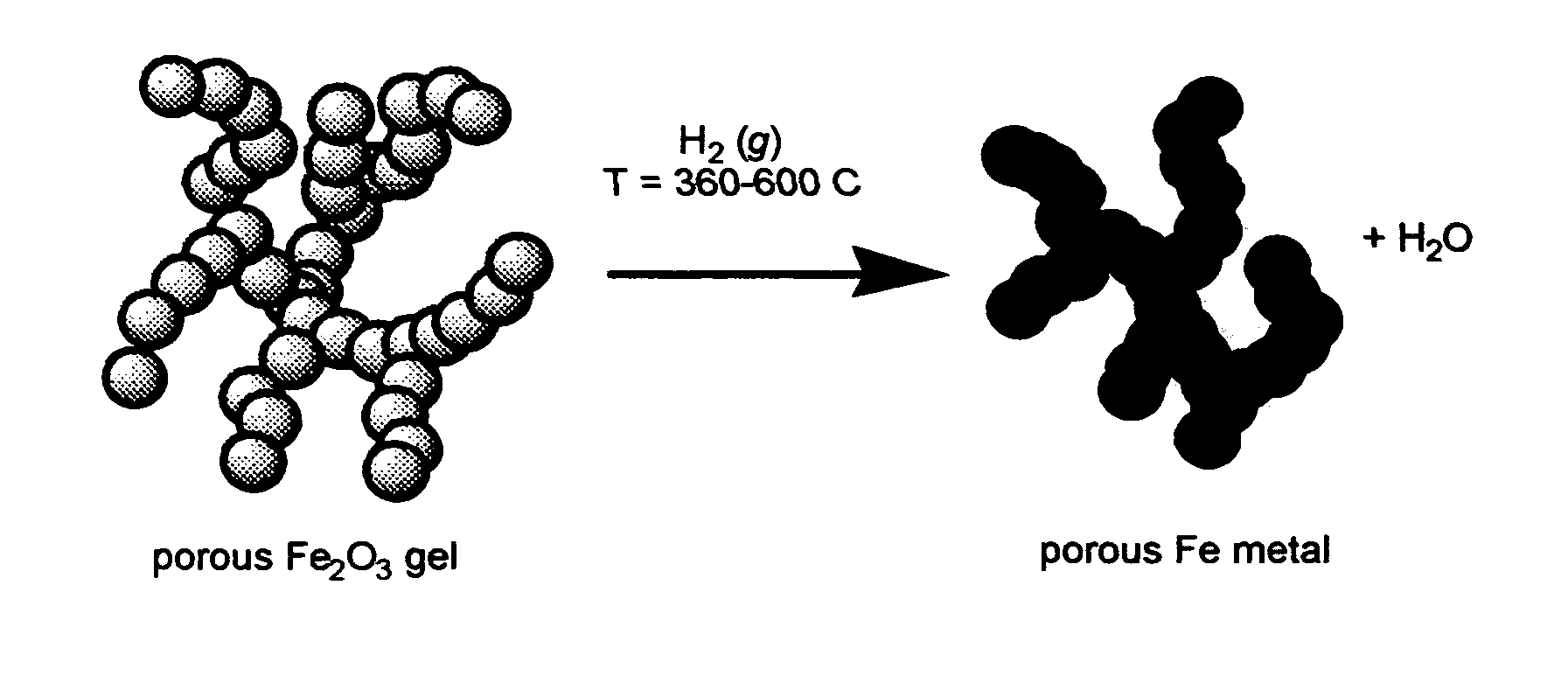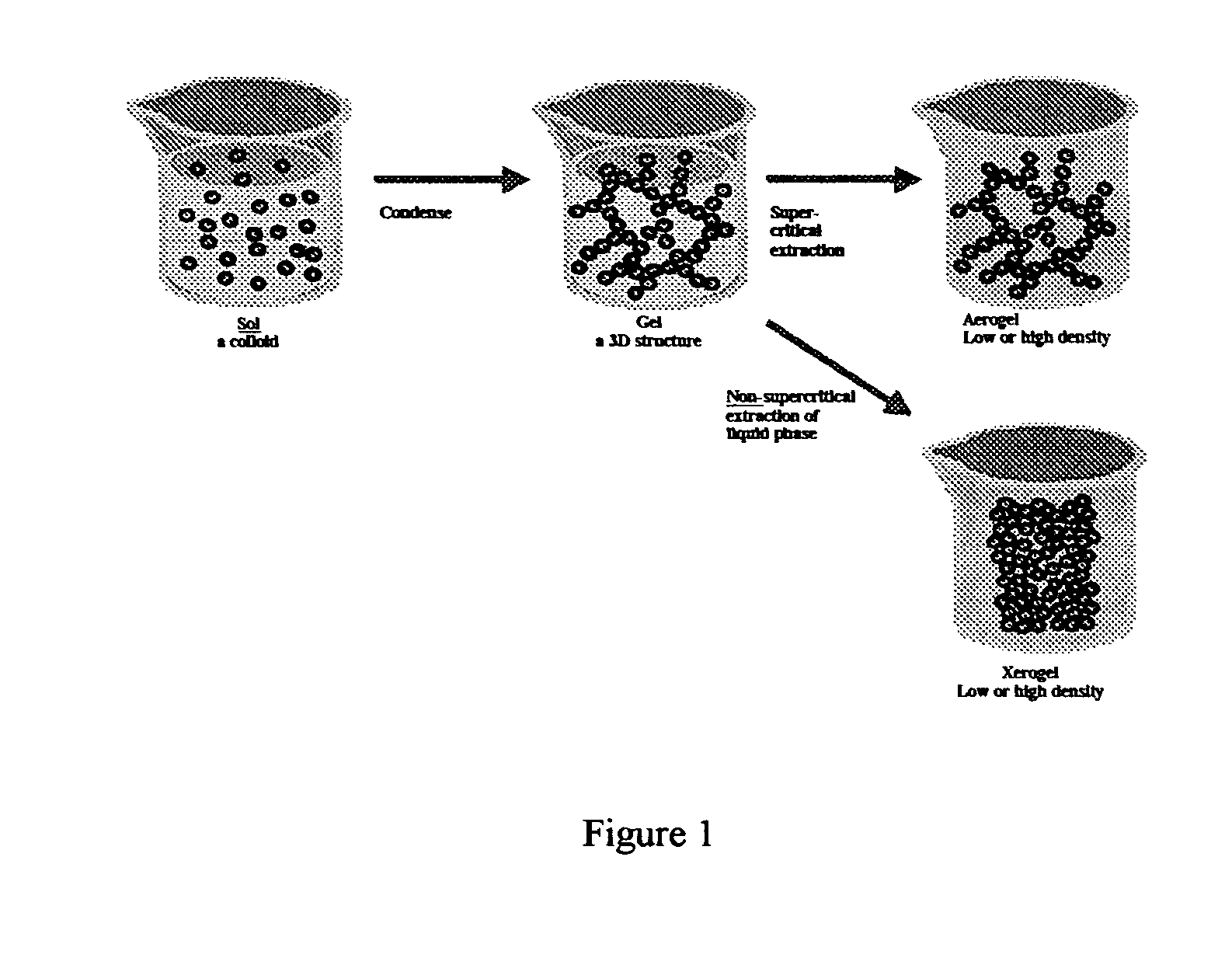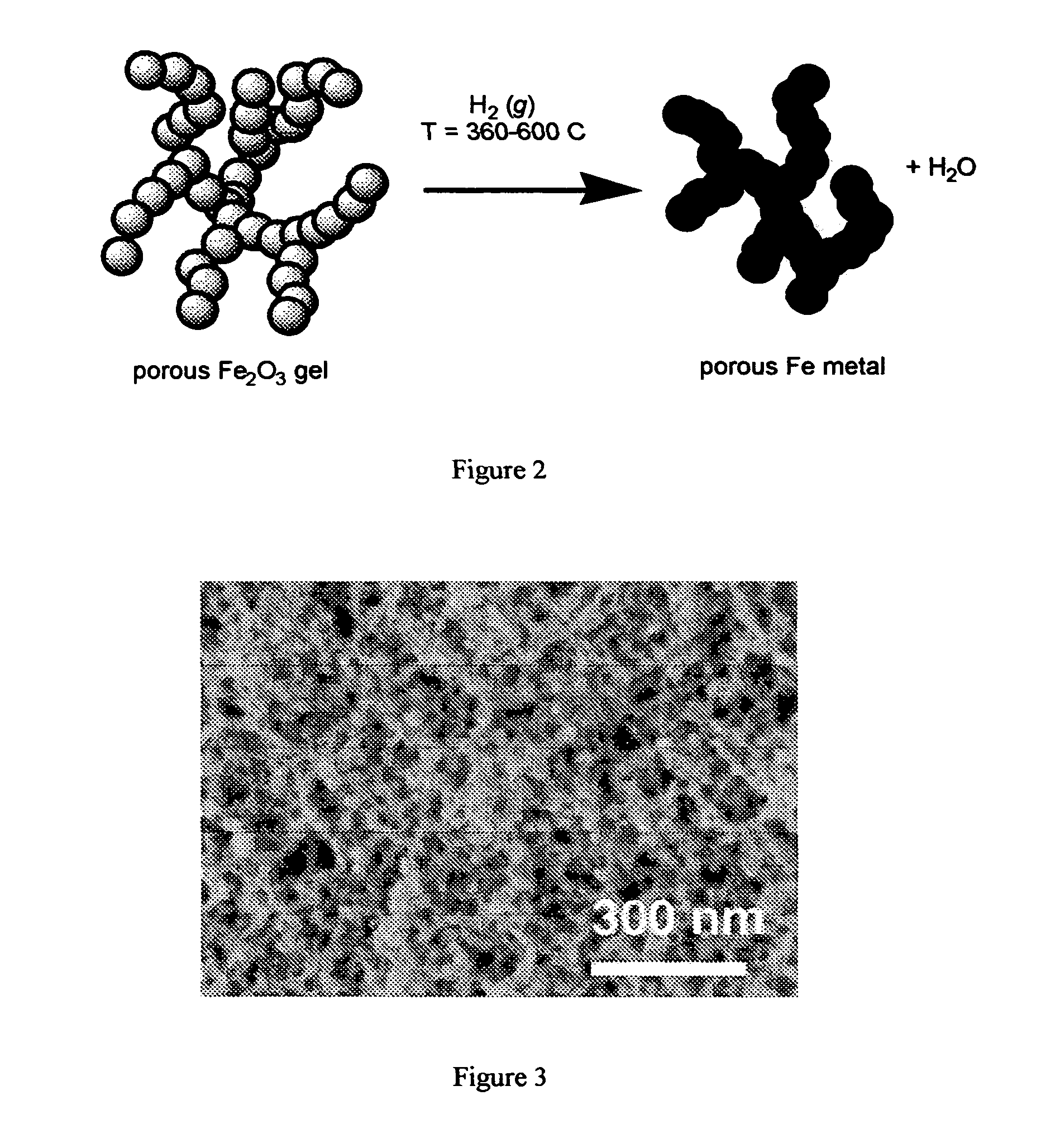Preparation of porous pyrophoric iron using sol-gel methods
a technology of porous pyrophoric iron and sol-gel, which is applied in the field of sol-gel chemistry, can solve the problems of high pyrophoric and toxic, corrosive, and represent both safety and environmental hazards, and achieve the effects of preventing pyrophoricity, easy oxidation, and small particle siz
- Summary
- Abstract
- Description
- Claims
- Application Information
AI Technical Summary
Benefits of technology
Problems solved by technology
Method used
Image
Examples
Embodiment Construction
[0029] The invention demonstrates that “sol-gel” chemical techniques can be used in water-, or another environmentally acceptable solvent, based processing to prepare high surface area porous iron (III) oxides. These materials can then be reduced using molecular hydrogen, at elevated temperatures, to produce high surface area porous pyrophoric iron metal. This material will be used to provide a decoy with comparable performance characteristics to that currently used without the environmental and health concerns of using hot caustic leaching solutions that are needed in the conventional production process of pyrophoric decoys. Alternatively, “sol-gel” techniques can also be used to immobilize the pyrophoric iron generated by reduction of the sol-gel-derived iron (III) oxides, or from some alternative source, in an inert matrix, which can be cast to parts with a variety of shapes and sizes. This second approach allows the resulting pyrophoric pyrotechnic to be easily and desirably rel...
PUM
| Property | Measurement | Unit |
|---|---|---|
| temperatures | aaaaa | aaaaa |
| temperatures | aaaaa | aaaaa |
| temperatures | aaaaa | aaaaa |
Abstract
Description
Claims
Application Information
 Login to View More
Login to View More - R&D
- Intellectual Property
- Life Sciences
- Materials
- Tech Scout
- Unparalleled Data Quality
- Higher Quality Content
- 60% Fewer Hallucinations
Browse by: Latest US Patents, China's latest patents, Technical Efficacy Thesaurus, Application Domain, Technology Topic, Popular Technical Reports.
© 2025 PatSnap. All rights reserved.Legal|Privacy policy|Modern Slavery Act Transparency Statement|Sitemap|About US| Contact US: help@patsnap.com



